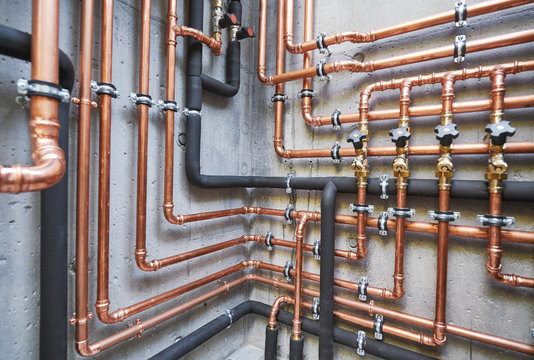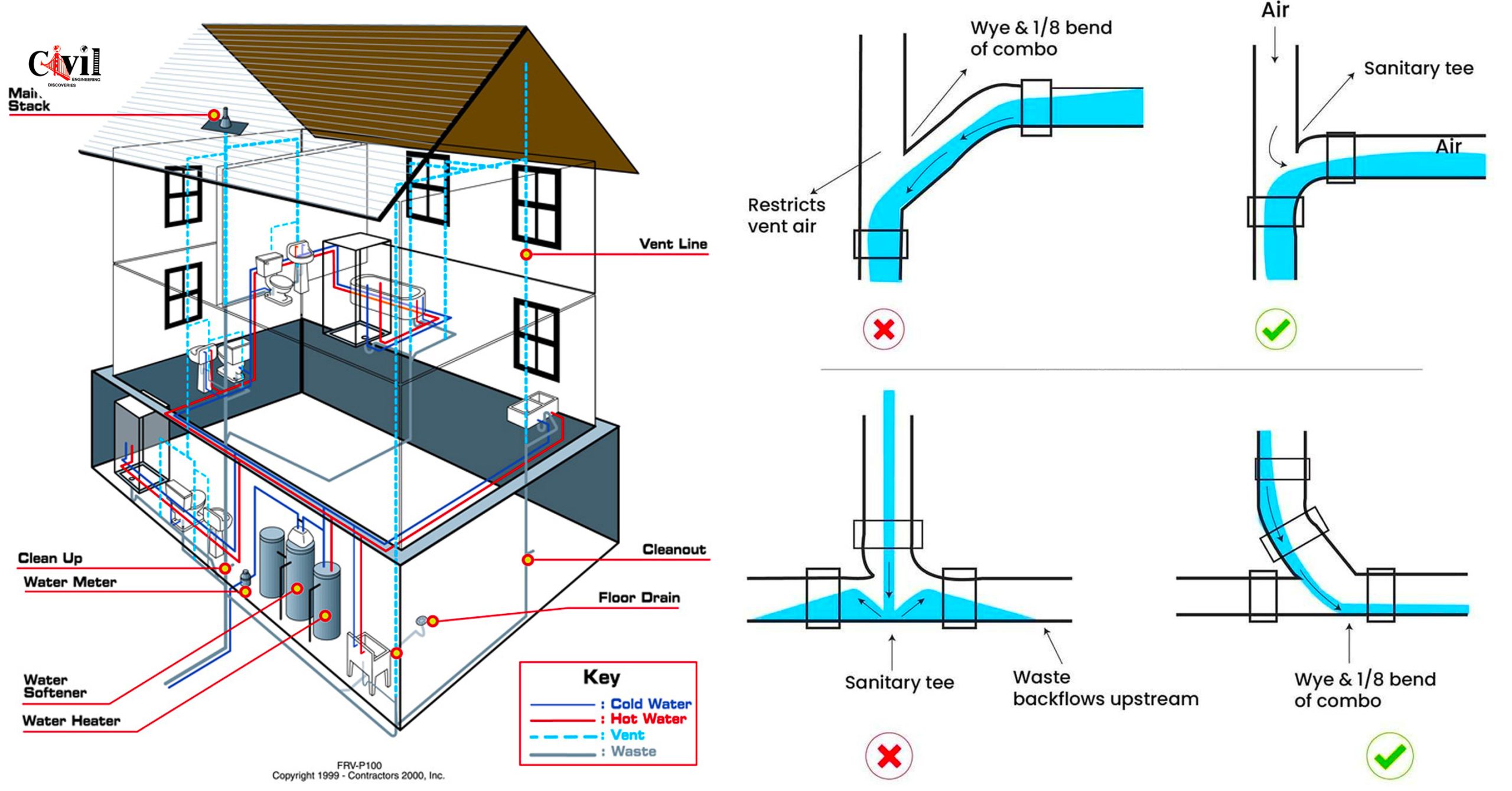The Complete Look at Your Home's Plumbing System Anatomy
The Complete Look at Your Home's Plumbing System Anatomy
Blog Article
What're your thoughts and feelings on Exploring Your Homes Plumbing Anatomy?

Understanding how your home's plumbing system functions is crucial for each property owner. From providing clean water for drinking, food preparation, and bathing to safely removing wastewater, a well-maintained plumbing system is crucial for your family's wellness and comfort. In this detailed guide, we'll explore the intricate network that makes up your home's pipes and offer suggestions on maintenance, upgrades, and handling usual concerns.
Introduction
Your home's plumbing system is more than simply a network of pipelines; it's a complicated system that ensures you have accessibility to tidy water and effective wastewater removal. Knowing its parts and exactly how they collaborate can help you protect against expensive repair services and make sure everything runs efficiently.
Fundamental Components of a Pipes System
Pipelines and Tubing
At the heart of your plumbing system are the pipelines and tubing that lug water throughout your home. These can be made from various products such as copper, PVC, or PEX, each with its benefits in terms of durability and cost-effectiveness.
Components: Sinks, Toilets, Showers, and so on.
Fixtures like sinks, commodes, showers, and bath tubs are where water is utilized in your home. Comprehending how these components connect to the pipes system assists in diagnosing troubles and preparing upgrades.
Shutoffs and Shut-off Points
Shutoffs control the flow of water in your plumbing system. Shut-off shutoffs are important throughout emergencies or when you require to make repair work, allowing you to separate parts of the system without disrupting water circulation to the whole home.
Water System
Main Water Line
The main water line links your home to the municipal water system or a private well. It's where water enters your home and is distributed to numerous fixtures.
Water Meter and Stress Regulatory Authority
The water meter measures your water usage, while a pressure regulatory authority makes certain that water flows at a risk-free stress throughout your home's plumbing system, protecting against damages to pipes and components.
Cold Water vs. Warm water Lines
Understanding the difference in between cold water lines, which provide water straight from the main, and hot water lines, which bring warmed water from the water heater, assists in fixing and preparing for upgrades.
Drainage System
Drain Water Lines and Traps
Drain pipelines carry wastewater away from sinks, showers, and commodes to the sewage system or septic tank. Traps stop sewage system gases from entering your home and also trap particles that can cause clogs.
Ventilation Pipes
Air flow pipelines allow air into the drain system, stopping suction that can reduce water drainage and cause traps to empty. Appropriate air flow is essential for keeping the honesty of your pipes system.
Relevance of Correct Water Drainage
Making sure appropriate drain avoids backups and water damage. Regularly cleaning up drains and preserving catches can prevent pricey repair work and expand the life of your pipes system.
Water Heating System
Sorts Of Hot Water Heater
Water heaters can be tankless or standard tank-style. Tankless heating units warm water on demand, while containers keep heated water for prompt usage.
Exactly How Water Heaters Link to the Plumbing System
Understanding just how hot water heater connect to both the cold water supply and warm water distribution lines aids in identifying issues like not enough hot water or leaks.
Maintenance Tips for Water Heaters
Consistently purging your water heater to get rid of sediment, checking the temperature level setups, and examining for leakages can prolong its lifespan and enhance energy performance.
Typical Pipes Problems
Leakages and Their Reasons
Leakages can occur due to aging pipes, loose installations, or high water stress. Dealing with leaks promptly prevents water damages and mold growth.
Obstructions and Obstructions
Clogs in drains pipes and bathrooms are usually triggered by flushing non-flushable things or an accumulation of oil and hair. Utilizing drain displays and being mindful of what goes down your drains pipes can prevent obstructions.
Signs of Pipes Problems to Watch For
Low tide pressure, sluggish drains pipes, foul odors, or uncommonly high water bills are indications of potential pipes troubles that ought to be attended to promptly.
Plumbing Upkeep Tips
Regular Assessments and Checks
Set up annual plumbing assessments to capture issues early. Try to find indications of leakages, corrosion, or mineral buildup in taps and showerheads.
Do It Yourself Upkeep Tasks
Simple jobs like cleansing faucet aerators, checking for bathroom leakages making use of color tablet computers, or shielding exposed pipelines in cold climates can avoid significant plumbing concerns.
When to Call a Professional Plumbing Technician
Know when a pipes issue needs specialist know-how. Attempting complex fixings without appropriate knowledge can cause even more damage and higher repair service prices.
Upgrading Your Pipes System
Factors for Updating
Upgrading to water-efficient components or replacing old pipelines can improve water top quality, reduce water costs, and increase the value of your home.
Modern Plumbing Technologies and Their Benefits
Explore innovations like wise leakage detectors, water-saving commodes, and energy-efficient water heaters that can conserve cash and decrease ecological impact.
Cost Considerations and ROI
Calculate the upfront costs versus long-term savings when taking into consideration pipes upgrades. Lots of upgrades pay for themselves with decreased utility bills and less repair services.
Environmental Impact and Preservation
Water-Saving Components and Home Appliances
Setting up low-flow taps, showerheads, and commodes can dramatically minimize water usage without sacrificing performance.
Tips for Lowering Water Use
Easy habits like dealing with leakages quickly, taking shorter showers, and running complete tons of laundry and recipes can conserve water and lower your energy bills.
Eco-Friendly Plumbing Options
Take into consideration sustainable plumbing products like bamboo for flooring, which is durable and environmentally friendly, or recycled glass for countertops.
Emergency situation Readiness
Steps to Take Throughout a Plumbing Emergency
Know where your shut-off shutoffs are located and how to switch off the water in case of a ruptured pipeline or significant leak.
Significance of Having Emergency Situation Calls Helpful
Maintain get in touch with information for neighborhood plumbing professionals or emergency situation services conveniently available for quick action throughout a plumbing situation.
Do It Yourself Emergency Fixes (When Suitable).
Temporary solutions like utilizing air duct tape to spot a leaking pipeline or putting a bucket under a trickling faucet can decrease damage till an expert plumber arrives.
Final thought.
Understanding the composition of your home's plumbing system equips you to maintain it successfully, saving money and time on repair work. By adhering to routine upkeep routines and remaining informed concerning modern pipes technologies, you can ensure your pipes system operates effectively for many years ahead.
HOW YOUR PLUMBING SYSTEM WORKS
Which Pipes Do What?
Blue lines = fresh water supply entering the building
Red lines = hot water supply entering the building
Grey lines = pipes carrying waste away from the building and venting pipes carrying gases away from the building (through the roof)
YOUR MAIN PLUMBING SYSTEMS
There are two main plumbing systems that support your home s basic plumbing needs one that brings clean water into your home, and one that sends dirty water away from your home. Connected to the toilet, bath, shower, and other faucets in your home, these two systems keep your water flowing in the right directions.
ACCESSING FRESH WATER
Fresh and clean water is brought into your home through the main water supply line . Filtered through one pipe, this water is pressured to flow into the various fixtures in your home at any given time.
This water can be sourced from a well located on your property, a pond or river (mostly cottages), or, as in most cases, from the city s municipal water treatment centre. However, it is important to note that water that is untreated, such as the water siphoned from ponds or rivers, may not be safe to drink. Personal water supplies always need to be treated for hardness and contaminants before consumed.
MUNICIPAL WATER SUPPLIES
Improve taste and odour
Remove sediment
Eliminate hardness
Reduce chlorine
COLD WATER SUPPLY VS. HOT WATER SUPPLY
Cold water flows into your home or building through the service line, which then distributes hot or cold water to your fixtures. This line is most commonly run through a central column that runs floor to floor. Hot water runs in short and straight pipes as the longer the pipeline, the more heat that will be lost in the transfer. Having shorter pipes also allows residents to access hot water more quickly.
WASTE WATER SYSTEM
Your wastewater system is divided into two parts pipes that send wastewater away from your home and venting pipes that send sewer gas away from your home. Sewage water travels through pipes that flush the water and waste towards local sewers that are operated and managed by your city or town. Most sewer systems rely on gravity to move the wastewater to where it needs to go.
The further away from your toilet or sink, the larger wastewater pipes become. This allows for waste to be disposed of from various parts of your home or business at once without pipe blockages. The angle and flow of these pipes are also essential for keeping your waste pipes clear of build up.
https://harrisplumbing.ca/how-your-home-plumbing-system-works/

HOW YOUR PLUMBING SYSTEM WORKS
Which Pipes Do What?
YOUR MAIN PLUMBING SYSTEMS
There are two main plumbing systems that support your home s basic plumbing needs one that brings clean water into your home, and one that sends dirty water away from your home. Connected to the toilet, bath, shower, and other faucets in your home, these two systems keep your water flowing in the right directions.
ACCESSING FRESH WATER
Fresh and clean water is brought into your home through the main water supply line . Filtered through one pipe, this water is pressured to flow into the various fixtures in your home at any given time.
This water can be sourced from a well located on your property, a pond or river (mostly cottages), or, as in most cases, from the city s municipal water treatment centre. However, it is important to note that water that is untreated, such as the water siphoned from ponds or rivers, may not be safe to drink. Personal water supplies always need to be treated for hardness and contaminants before consumed.
MUNICIPAL WATER SUPPLIES
COLD WATER SUPPLY VS. HOT WATER SUPPLY
Cold water flows into your home or building through the service line, which then distributes hot or cold water to your fixtures. This line is most commonly run through a central column that runs floor to floor. Hot water runs in short and straight pipes as the longer the pipeline, the more heat that will be lost in the transfer. Having shorter pipes also allows residents to access hot water more quickly.
WASTE WATER SYSTEM
Your wastewater system is divided into two parts pipes that send wastewater away from your home and venting pipes that send sewer gas away from your home. Sewage water travels through pipes that flush the water and waste towards local sewers that are operated and managed by your city or town. Most sewer systems rely on gravity to move the wastewater to where it needs to go.
The further away from your toilet or sink, the larger wastewater pipes become. This allows for waste to be disposed of from various parts of your home or business at once without pipe blockages. The angle and flow of these pipes are also essential for keeping your waste pipes clear of build up.
https://harrisplumbing.ca/how-your-home-plumbing-system-works/
As a passionate reader on Plumbing Installation 101: All You Need to Know, I was thinking sharing that piece of content was necessary. Remember to take the opportunity to distribute this blog entry if you enjoyed reading it. Kudos for your time. Return soon.
Visit Site Report this page